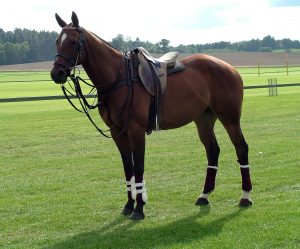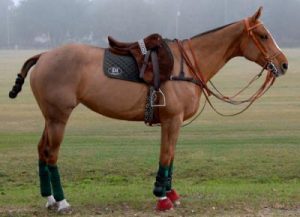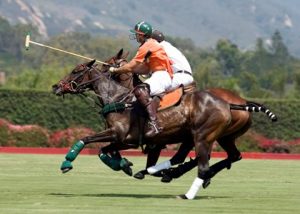It’s NOT A Horse, It’s A Pony! Understanding The Polo Pony
The Sport of Kings is a truly timeless and incredible game, which offers infinite joy to watch and play- but how much do you really know about the true players; the horses, without which the game could not exist? For starters, you’ve probably encountered the Horse/Pony argument. Anyone from an equestrian background will ultimately be confused, and maybe a little enraged by the notion that an equine of any size (which is the usual indicator of Horse Or Pony) is considered a pony in polo circles. But, ultimately, it is! This is a reference to their agility, rather than their size; most polo ponies stand at about 15.1 hands, in direct defiance of the 14.2 hands maximum usually ascribed to a pony. Here’s a few things you should know about the equine athletes;
The Look
 Polo ponies are usually ‘hogged’- they have their manes clipped as close to their neck as possible, and sometimes the dock (the top part, where the bone ends) of their tails are trimmed. Tails must also be plaited and taped when playing; this prevents hair becoming entangled in reins or mallets. A full mane usually signals a young, inexperienced pony and warns players to be more considerate when playing around them, as they may be nervous and unpredictable. Frequently, you will see Umpires riding horses like these; this is to give a young horse experience of the game, and to get use to the close proximity to other horses, without the pressure of being too involved. Either that, or players take turns donating a pony from their collection (called a “string”) to mount the Umpire.
Polo ponies are usually ‘hogged’- they have their manes clipped as close to their neck as possible, and sometimes the dock (the top part, where the bone ends) of their tails are trimmed. Tails must also be plaited and taped when playing; this prevents hair becoming entangled in reins or mallets. A full mane usually signals a young, inexperienced pony and warns players to be more considerate when playing around them, as they may be nervous and unpredictable. Frequently, you will see Umpires riding horses like these; this is to give a young horse experience of the game, and to get use to the close proximity to other horses, without the pressure of being too involved. Either that, or players take turns donating a pony from their collection (called a “string”) to mount the Umpire.
Breeds
 In the UK and the USA, most of the time ponies enter polo from the racing industry or Argentina. Thoroughbred blood gives speed and stamina, and when crossed with Quarter Horses or Criollos produces ponies that are swift, agile and very sensitive to aids- perfect for polo! In Australia, Australian Stock Horses are the most common breed used in polo.
In the UK and the USA, most of the time ponies enter polo from the racing industry or Argentina. Thoroughbred blood gives speed and stamina, and when crossed with Quarter Horses or Criollos produces ponies that are swift, agile and very sensitive to aids- perfect for polo! In Australia, Australian Stock Horses are the most common breed used in polo.
A professional will have many ponies in his string and will rotate them depending on chukkas and which position he plays at. A pony cannot be played in more than two chukkas of a singular match, and they cannot be consecutive. Just imagine having to sprint, stop, turn and sprint again, for 15 minutes! Players actually often choose to swap a horse halfway through a chukka, because the horse feels tired, or perhaps too excitable, or because it is being saved for later chukkas.
Riding Style
 Polo ponies are trained to ride in a style very close to Western; all the reins are held in one hand in order for the player to hold their mallet, so the ponies are trained to react to pressure in the bit and along the neck. They are also trained in dressage footwork to improve agility and control; collection and extension, flying changes, rein-back (walking backwards) and even piaffes are common as the ponies run, stop and turn quickly, so look out for them next time you watch a polo match!
Polo ponies are trained to ride in a style very close to Western; all the reins are held in one hand in order for the player to hold their mallet, so the ponies are trained to react to pressure in the bit and along the neck. They are also trained in dressage footwork to improve agility and control; collection and extension, flying changes, rein-back (walking backwards) and even piaffes are common as the ponies run, stop and turn quickly, so look out for them next time you watch a polo match!





